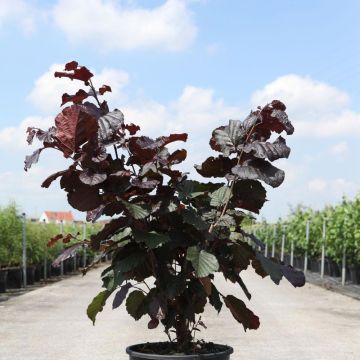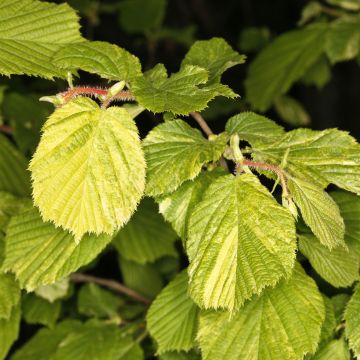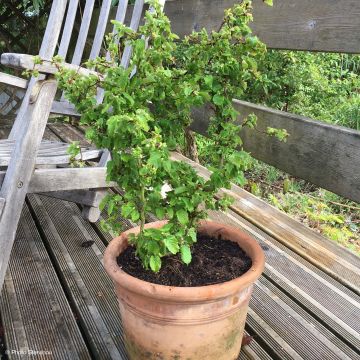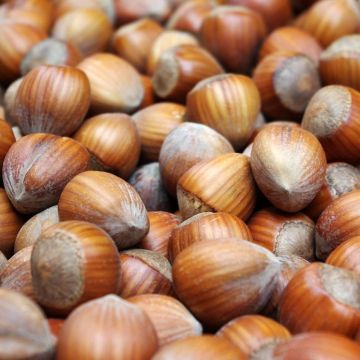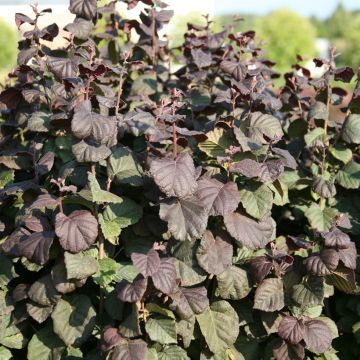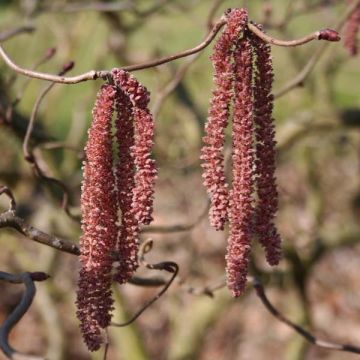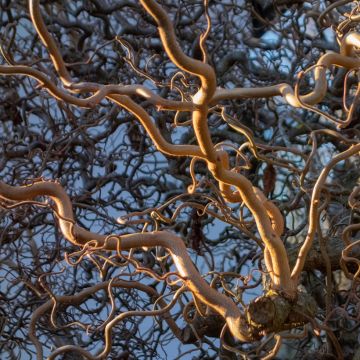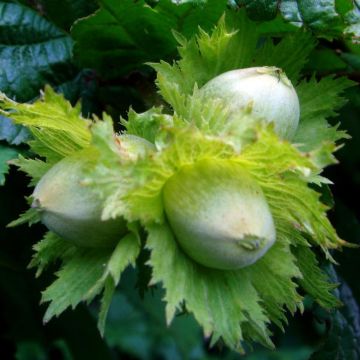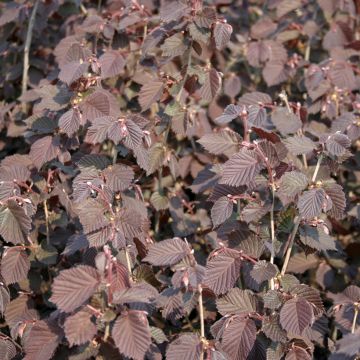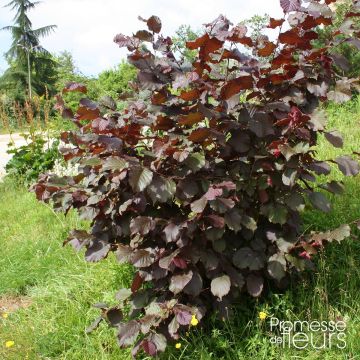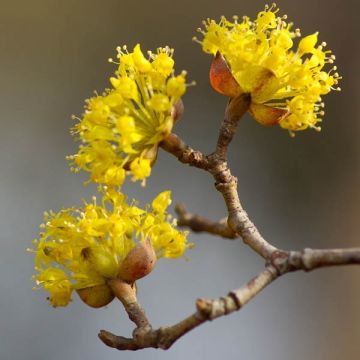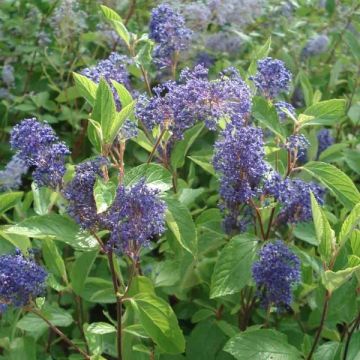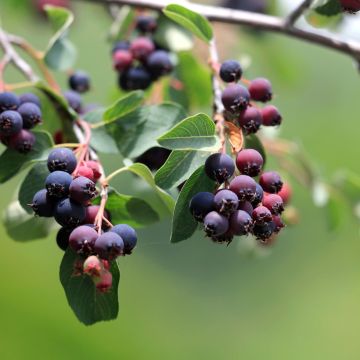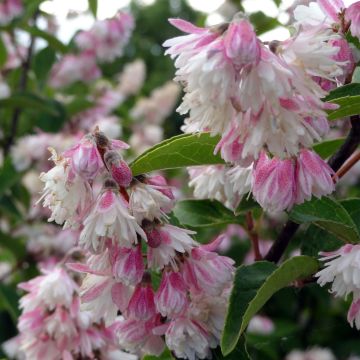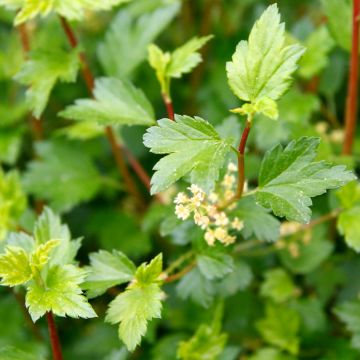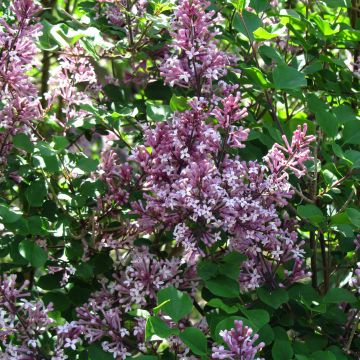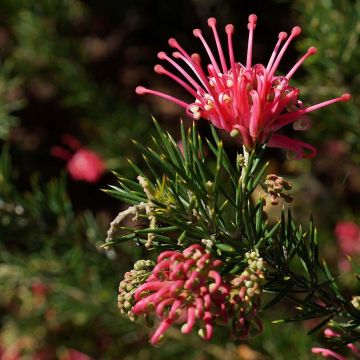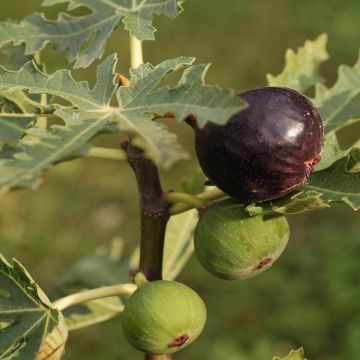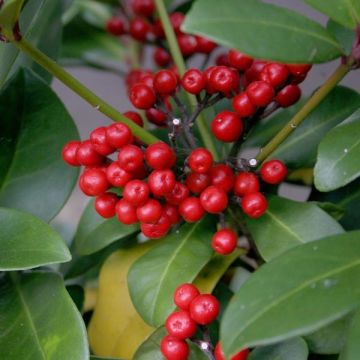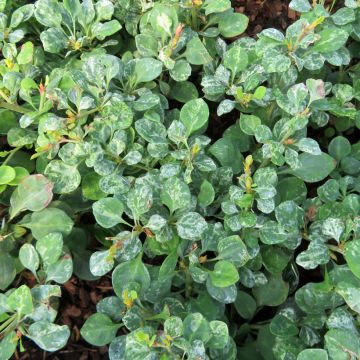

Corylus avellana Laciniata - Common Hazel
Corylus avellana Laciniata - Common Hazel
Corylus avellana Laciniata
Hazel, Common Hazel
This plant carries a 24 months recovery warranty
More information
We guarantee the quality of our plants for a full growing cycle, and will replace at our expense any plant that fails to recover under normal climatic and planting conditions.
From €5.90 for pickup delivery and €6.90 for home delivery
Express home delivery from €8.90.
Does this plant fit my garden?
Set up your Plantfit profile →
Description
Corylus avellana 'Laciniata' is a form of common hazel with laciniate leaves, meaning they are divided into acute segments and finely toothed along the edges. Its growth is slower than that of the wild hazel and its development is less significant. It is an elegant deciduous shrub, appreciated for its dense golden catkins in late winter. Pollinated by another hazel planted nearby, for example in a hedge, it will also offer you some delicious hazelnuts in late summer.
Corylus avellana 'Laciniata' is sometimes sold under the names Corylus avellana f. heterophylla, Corylus avellana var. heterophylla, Corylus avellana 'Quercifolia' or Corylus avellana var. laciniata. It is a shrub of the Betulaceae family. The typical species, also known as the common hazel, is native to temperate zones of the northern hemisphere. It is a small monoecious fruit tree, bearing separate male and female inflorescences on the same individual, with the two types of flowers not appearing simultaneously on the branches. The common hazel is a light-demanding species that prefers neutral to slightly fertile, not too dry soil. It is wind-pollinated. It is advisable to plant at least two hazels in the garden to optimise hazelnut production.
Corylus avellana 'Laciniata', usually grafted on a stem, develops a trunk topped with a crown of variable shape, often wide and fairly sparse. Eventually, it will reach approximately 2m in all directions. The flowering occurs in two stages: in February-March the male flowers appear, grouped in pendulous, golden catkins, 5 cm in length. The inconspicuous female flowers then open in March-April. They are shaped like a bud measuring 6 to 8 mm, partially concealing bright red stigmas. The foliage appears late in May. The leaves are generally triangular and hairy, with pointed segments along the edges, each bordered by numerous small teeth. They measure 6 to 10 cm long and are a fairly light green until late summer. In autumn, they turn yellow before falling. The fruits that form on 1-year-old shoots in mature individuals are achenes grouped in threes, commonly known as hazelnuts. They are wrapped in a long green bract. The shell of the hazelnuts, initially white, turns brown when ripe between late August and early September.
The 'Laciniata' hazel is often used in mixed hedges with other hazels and various deciduous shrubs. Easy to grow in ordinary soil, it is hardy but not recommended in excessively dry conditions. It is an elegant plant that can be enhanced by other shrubs with decorative foliage such as Physocarpus, hedge spireas, and coloured foliage viburnums.
Report an error about the product description
Plant habit
Flowering
Foliage
Safety measures
Botanical data
Corylus
avellana
Laciniata
Betulaceae
Hazel, Common Hazel
Corylus avellana f. heterophylla ( Hort. ), Corylus avellana var. heterophylla ( Hort. ), Corylus avellana 'Quercifolia', Corylus avellana var. laciniata ( Hort. )
Western Europe
atteinterespiratoire
Cette plante peut entraîner des symptômes allergiques.
Evitez de la planter si vous ou vos proches souffrez de rhinite saisonnière ("rhume des foins").
Davantage d'informations sur https://plantes-risque.info
Other Corylus - Hazelnuts
Planting and care
Easy to grow and perfectly hardy, Corylus avellana 'Laciniata' is well suited to most climates. It will adapt to any good garden soil that is not too dry, without excessive limestone or acidity. It appreciates a sunny to semi-shaded position. In late autumn, you can prune any awkward branches.
Planting period
Intended location
Care
This item has not been reviewed yet - be the first to leave a review about it.
Hedge shrubs
Haven't found what you were looking for?
Hardiness is the lowest winter temperature a plant can endure without suffering serious damage or even dying. However, hardiness is affected by location (a sheltered area, such as a patio), protection (winter cover) and soil type (hardiness is improved by well-drained soil).

Photo Sharing Terms & Conditions
In order to encourage gardeners to interact and share their experiences, Promesse de fleurs offers various media enabling content to be uploaded onto its Site - in particular via the ‘Photo sharing’ module.
The User agrees to refrain from:
- Posting any content that is illegal, prejudicial, insulting, racist, inciteful to hatred, revisionist, contrary to public decency, that infringes on privacy or on the privacy rights of third parties, in particular the publicity rights of persons and goods, intellectual property rights, or the right to privacy.
- Submitting content on behalf of a third party;
- Impersonate the identity of a third party and/or publish any personal information about a third party;
In general, the User undertakes to refrain from any unethical behaviour.
All Content (in particular text, comments, files, images, photos, videos, creative works, etc.), which may be subject to property or intellectual property rights, image or other private rights, shall remain the property of the User, subject to the limited rights granted by the terms of the licence granted by Promesse de fleurs as stated below. Users are at liberty to publish or not to publish such Content on the Site, notably via the ‘Photo Sharing’ facility, and accept that this Content shall be made public and freely accessible, notably on the Internet.
Users further acknowledge, undertake to have ,and guarantee that they hold all necessary rights and permissions to publish such material on the Site, in particular with regard to the legislation in force pertaining to any privacy, property, intellectual property, image, or contractual rights, or rights of any other nature. By publishing such Content on the Site, Users acknowledge accepting full liability as publishers of the Content within the meaning of the law, and grant Promesse de fleurs, free of charge, an inclusive, worldwide licence for the said Content for the entire duration of its publication, including all reproduction, representation, up/downloading, displaying, performing, transmission, and storage rights.
Users also grant permission for their name to be linked to the Content and accept that this link may not always be made available.
By engaging in posting material, Users consent to their Content becoming automatically accessible on the Internet, in particular on other sites and/or blogs and/or web pages of the Promesse de fleurs site, including in particular social pages and the Promesse de fleurs catalogue.
Users may secure the removal of entrusted content free of charge by issuing a simple request via our contact form.
The flowering period indicated on our website applies to countries and regions located in USDA zone 8 (France, the United Kingdom, Ireland, the Netherlands, etc.)
It will vary according to where you live:
- In zones 9 to 10 (Italy, Spain, Greece, etc.), flowering will occur about 2 to 4 weeks earlier.
- In zones 6 to 7 (Germany, Poland, Slovenia, and lower mountainous regions), flowering will be delayed by 2 to 3 weeks.
- In zone 5 (Central Europe, Scandinavia), blooming will be delayed by 3 to 5 weeks.
In temperate climates, pruning of spring-flowering shrubs (forsythia, spireas, etc.) should be done just after flowering.
Pruning of summer-flowering shrubs (Indian Lilac, Perovskia, etc.) can be done in winter or spring.
In cold regions as well as with frost-sensitive plants, avoid pruning too early when severe frosts may still occur.
The planting period indicated on our website applies to countries and regions located in USDA zone 8 (France, United Kingdom, Ireland, Netherlands).
It will vary according to where you live:
- In Mediterranean zones (Marseille, Madrid, Milan, etc.), autumn and winter are the best planting periods.
- In continental zones (Strasbourg, Munich, Vienna, etc.), delay planting by 2 to 3 weeks in spring and bring it forward by 2 to 4 weeks in autumn.
- In mountainous regions (the Alps, Pyrenees, Carpathians, etc.), it is best to plant in late spring (May-June) or late summer (August-September).
The harvesting period indicated on our website applies to countries and regions in USDA zone 8 (France, England, Ireland, the Netherlands).
In colder areas (Scandinavia, Poland, Austria...) fruit and vegetable harvests are likely to be delayed by 3-4 weeks.
In warmer areas (Italy, Spain, Greece, etc.), harvesting will probably take place earlier, depending on weather conditions.
The sowing periods indicated on our website apply to countries and regions within USDA Zone 8 (France, UK, Ireland, Netherlands).
In colder areas (Scandinavia, Poland, Austria...), delay any outdoor sowing by 3-4 weeks, or sow under glass.
In warmer climes (Italy, Spain, Greece, etc.), bring outdoor sowing forward by a few weeks.

































